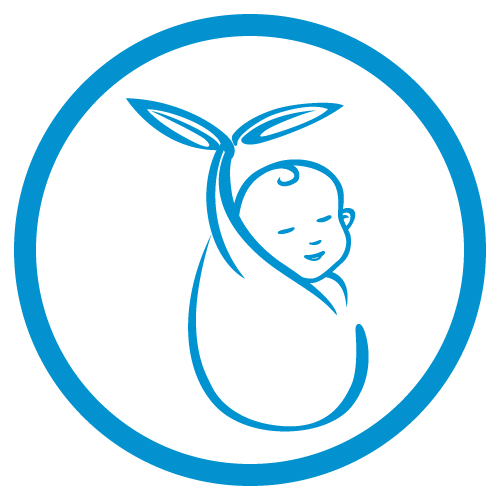
Clinical Tools for the Changing Landscape of Newborn Care Lecture Pack
Current research shows that expanding our definition of newborn care and assessment is crucial to establishing lifelong wellbeing for the infants in our care. As health care providers we have a crucial role to play that goes beyond physical care. The way we administer care and the modeling we provide to parents has an important impact on an infant’s mental and emotional health throughout their lifetime.
Expand your knowledge and skills with this practice changing package that provides updates on important topics like jaundice, oral examination, sleep and breastfeeding while also diving deeper into topics such as bodily autonomy in newborns, the importance of responsive feeding, trauma informed care, and how babies learn to love.
This lecture package was originally offered as part of the GOLD Midwifery Online Conference 2023.


Martina Donaghy is a registered midwife of 30 years, an IBCLC of 22 years and a Senior Midwifery Lecturer of 17 years’ experience. During the past two decades her main posts as a hospital based Infant Feeding Specialist and a Midwifery Lecturer has seen a focus on educating registered midwives, student nurses, midwives, paediatric and Specialist Community Public Health nurses on the importance of breastmilk and breastfeeding, ensuring these students are equipped to support the breastfeeding mother in achieving her feeding goals. Martina has led and supported her university to achieve successful UNICEF UK Baby Friendly accreditation for the BSc Midwifery and Specialist Community Public Health Nursing programmes. She also teaches on the Midwifery Master’s program specialising in the promotion and support of physiological birth, breastfeeding, biological nurturing, and maternal, infant attachment. Recent publications include a chapter in Examination of the newborn and neonatal health, titled Helping parents make decisions regards to infant feeding and cosleeping. Her most recent midwifery article focused on supporting maternal and infant physiology after birth. She is originally from Australia and has resided in the United Kingdom for 30 plus years.
Objective 1: Describe what is meant by responsive breastfeeding and its important association with the responsive parenting style.
Objective 2: Explain how and why responsive breastfeeding improves the infants development.
Objective 3: Describe the impact responsive breastfeeding has upon global public health issues.
From the moment of conception, maternal and fetal physiology is intrinsically linked in a synergistic partnership, with optimal infant development dependent on this relationship continuing well into the infants first 1001 days. A key pivotal facet of this reciprocal relationship is responsive breastfeeding. Responsive breastfeeding is far more than a way of infant feeding, but a sensitive synchronous parenting style that secures optimal growth, nutrition, immune development, infant /maternal attachment, whilst fostering successful lactation and the development of positive feeding habits well into infancy. This presentation will explain what is meant by responsive breastfeeding, exploring the science behind how this type of feeding promotes optimal infant health.
The presentation will conclude with an exploration of the wider benefits of responsive breastfeeding, examining the possibility of this type of feeding style contributing to improving several public health issues, in particular childhood aversity and obesity. Lastly, recommendations for promotion and support of responsive breastfeeding will be outlined.
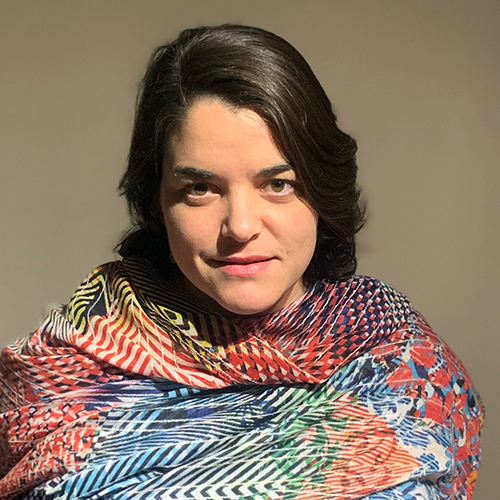

Mariana Colmenares Castano was born in Mexico City, and from an early age she was fascinated by animals and nature.She studied medicine at the National University of Mexico (UNAM), and foundher passion as a pediatrician doing her residency at the National Pediatric Institute. When her first child was born she witnessed the lack of knowledge and commitment to breastfeeding within the medical profession, and so she decided to specialize in breastfeeding medicine. She certified as a Lactation Consultant (IBCLC) in 2011.Mariana is a member of the International Lactation Consultant Association, the Academy of Breastfeeding Medicine, and a proud founding member of the National Lactation Consultant Association of Mexico (ACCLAM), where she served on the Board of Directors as Education Coordinator (2014-2019). She is part of board director for the Academy of Breastfeeding Medicine for a 3 year period (2019-2022) and recently named as secretary for the Academy of Breastfeeding Medicine. Mariana is a member of the team for Breastfeeding Country Index BFCI, a project from Yale University and Universidad Iberoamericana. She is consultant for the National Health Institute in Mexico and has collaborated with UNICEF in breastfeeding projects and part of the steering committee for the WHO. She has spoken at national and international conferences, co-published numerous articles and co-authored a chapter for the National Academy of Medicine. At the moment she is a Clinical Fellow in Community Paediatrics in London.
Topic: Breastfeeding The Baby With Congenital Heart Disease - [View Abstract]
Topic: Breastfeeding with Insufficient Glandular Tissue - [View Abstract]
Topic: Clinical Assessment and Management of Jaundice in the Newborn - [View Abstract]
Topic: Oral Colostrum Care as an Immunological Intervention in the NICU - [View Abstract]
Objective 1: Describe the risk factors and clinical features observed in neonatal jaundice.
Objective 2: List different signs and symptoms that can accompany neonatal jaundice and may indicate severe jaundice or complications.
Objective 3: Describe how to support breastfeeding dyads with rational and evidence based information regarding jaundice.
The yellow colour on the skin and eyes in the newborn is called newborn jaundice, which is common and usually harmless. It develops often 2 days after birth and it must be ruled out during the newborn physical examination. However, in a small number of babies, being jaundiced can be due to a more serious underlying condition that needs to be assessed and urgently determined if treatment is needed as there could be a risk for brain damage. An early assessment and adequate support to the family is crucial to protect the breastfeeding dyad. Learn more about the risk factors and clinical features observed with neonatal jaundice and the current guidelines for treatment.


Effath Yasmin is India's leading Biodynamic Craniosacral Therapist, an award winning International Board Certified Lactation Consultant & a Documentary Film Maker. She is also an International Speaker, an Author & a Bach Flower Practitioner.
Her special interests lie in Infant Oral, Sucking & Airway Dysfunction, Tongue Tie, Birth Trauma, Craniofacial Development and a range of chronic physical and mental dis-eases & quantum energy phenomenon. She applies these sciences into Life Coaching, Inner Child Healing and Parenting. Her approach stems from fundamental truth of human organism is complete and self-regulatory and treatment & counselling approach is by deep listening & true empathy to mind body and spirit rather than by intervention.
She currently sits on several national & international professional boards.
She has spear-headed & dedicated her life to many projects with a central mission of advocacy, education and awareness for integrative multidisciplinary wellness approach worldwide. Her work has been published in the International Journals & a textbook and she writes extensively on print and digital media on the subjects of Breastfeeding, Tongue Tie, Parenting & Health related subjects.
Her international award winning film 'Untying Breastfeeding' exposes the glaring unseen obstacles to Birth & Breastfeeding & early parenting that can help restore motherhood and has been widely celebrated over 1500 Cities worldwide. She is currently pursuing her Ph.D. in Metaphysical Sciences.
Topic: Rethinking Surgical Tools - Infant Frenotomy & Pain - [View Abstract]
Topic: Trauma Informed Care in Clinical Infant Oral Assessment: Understanding Body Autonomy - [View Abstract]
Objective 1: Define body autonomy & trauma.
Objective 2: Describe key principles of performing a physical oral examination & assessment within the framework of body autonomy to infants, particularly those with a history of birth trauma.
Objective 3: Explain trauma-informed gentle communication skills both verbal and nonverbal language and maneuvers to communicate respect of body’s autonomy in order to restore a sense of safety, trust & connection during the clinical oral examination of infants.
The Mouth, nasal passages, ears, eyes, digestive & reproductive organ systems are all orifices or openings in our body and define as our most intimate parts of our body and hold the precincts of Body Autonomy. Since a physical examination of various kinds are a requirement for assessment & evaluation in clinical care, it provides us with an opportunity to establish trust and reinforce a safe encounter between a care provider and infant patient. Anyone especially an infant going through a physical examination maybe at risk to be experiencing shame, vulnerability & trauma which can have lifelong impacts such as triggers for past memories, anxiety, distress or discomfort or even PTSD. Immediately after the trauma, this can lead to oral aversions symptoms complete with refusal to latch & breastfeed, turning away from food, gagging. coughing & choking. Oral aversion situations pose an extremely stressful situation for all — the infant and the family and the care providers. Therefore, a respectable trauma-informed approach to the physical oral examination during the assessment, evaluation and treatment and rehabilitation of oral restrictions or ankylofrenulae (tongue tie) is essential and important. This will involve using gentle communication skills both verbal and nonverbal language and maneuvers to communicate respect of body autonomy and restore a sense of safety, trust & connection.
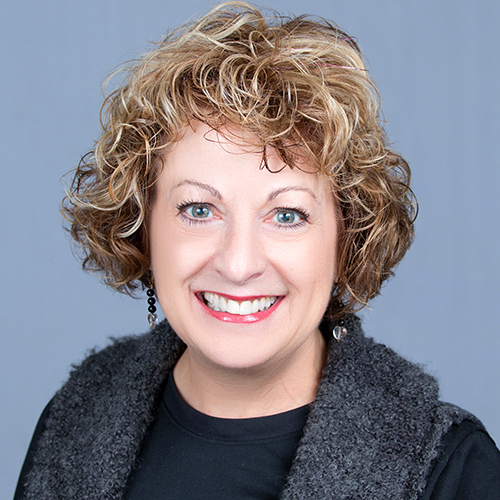

Kathy Parkes is a sought-after speaker and webinar presenter as well as a published author. She has lived all over the world, settling in San Antonio, Texas after her Air Force husband retired. Kathy is a Registered Nurse with a Masters in Nursing Education and received her International Board Certified Lactation Consultant designation in 1992. Her private practice, Breastfeeding Perspectives, adds to her over 30 years of lactation experiences, which include WIC staff and clients, in-patient hospital work on L&D, postpartum, and NICU, taking a hospital to Baby-Friendly designation, setting up a lactation visitation program for both a home health agency and for the largest birth doula organization in San Antonio, and providing home and office lactation visits for private clients. She specializes in tethered oral tissues (tongue-and-lip ties), milk supply problems, multiples, and preterm/late preterm infants.
On the fun side, Kathy met her husband of 47 years as she was jumping out of the airplane he was flying. (You could say she fell for him!) She loves animals, traveling, and gardening. Most of all, she loves teaching others about breastfeeding.
Topic: How to Start a Private Lactation Practice - [View Abstract]
Topic: I QUIT!! Burnout, compassion fatigue, and self-care for the healthcare professional - [View Abstract]
Topic: Lactation Choices Following Pre-and-perinatal Loss - [View Abstract]
Topic: Powerful Relationships: How Babies (and Parents) Learn To Love - [View Abstract]
Objective 1: Define the difference between bonding and attachment.
Objective 2: Explain the differences in parenting styles created after the theory of bonding and attachment was introduced to the public.
Objective 3: Name at least 2 (two) maternal mental health issues that can affect infant bonding and attachment.
For many years, science told new parents that babies were “blank slates”, didn’t feel anything, and must not be touched. Research, though, has proven otherwise. This session will cover these historical theories as well as the theory of attachment and bonding. Discussing the physiological, neurobiological, and hormonal basis for love, the session will cover the prenatal to toddler stages of a young child’s life to discover the amazing changes in both the infant and maternal bodies to prepare for and reinforce bonding and attachment. To end, this session will touch on the birthing parent’s mental health and its effect on the infant.
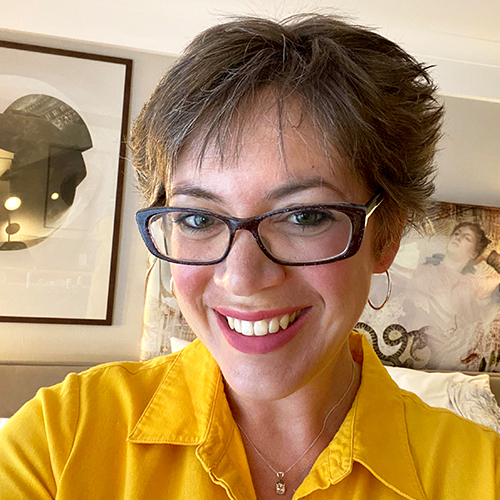

Lyndsey is an experienced paediatric nurse, children’s public health nurse, International Board Certified Lactation Consultant, Holistic Sleep Coach, researcher and responsive parenting advocate. She has worked in hospitals, clinics, the community and within clients’ homes for 20 years, serving within the UK NHS, in private practice and voluntarily.
The co-founder and clinical director of the Holistic Sleep Coaching program, Lyndsey regularly teaches internationally, as well as providing mentorship for newer sleep coaches. She is passionate about responsive feeding, gentle parenting and promoting parental confidence and well-being.
With Professor Amy Brown, she is the co-founder of Thought Rebellion – an education and publishing company seeking to inspire, challenge and equip professionals and writers in the parenting, lactation and perinatal space with an evidence based revolution.
Lyndsey is currently a PhD researcher at Swansea University, exploring the needs and challenges of medically complex breastfed infants and children. In 2019 she set up the Breastfeeding the Brave project to raise awareness of the unique breastfeeding needs of chronically, critically, and terminally ill children in the paediatric setting. The mother of a childhood cancer survivor, she often talks about the impact of chronic serious illness on families, and seeks to support other families living through a serious childhood illness.
Lyndsey is a respected international speaker and teacher, and regularly speaks out against the dominant sleep training culture, as well as advocating for the rights of families to receive high-quality, compassionate and expert support. She is the author of Holistic Sleep Coaching (2018), Let’s talk about your new family’s sleep (2020), Still Awake (2021), Breastfeeding the Brave (2022) and co-author of The Writing Book (2022).
Topic: Breastfeeding Children with Cancer - [View Abstract]
Topic: More Support in a Coffee Shop Than in the Hospital: Experiences of Breastfeeding Children With Medical Complexity - [View Abstract]
Topic: Supporting Families With Sleep While Optimising Attachment and Responsive Feeding - [View Abstract]
Topic: You Can't Sleep With Your Foot On The Gas Pedal: How To Improve Sleep By Tapping Into Calm - [View Abstract]
Objective 1: Describe the context of sleep ‘problems’ within modern parenting.
Objective 2: Explain the variety of ways parents currently receive information about sleep.
Objective 3: Describe the current evidence base regarding mainstream sleep strategies.
Objective 4: List at least 3 basic tools to support parents with their sleep hygiene.
Many parents feel confused about how to approach sleep with their infants. There is a lack of consistent, evidence-based information about infant sleep, and in the context of ever-increasing contextual pressures, this can lead many parents to ask for help with sleep. However, sleep information that is respectful to mental health, attachment and breastfeeding can be hard to find, particularly when national guidelines seem to advocate approaches that promote a non-response. Perinatal professionals are uniquely placed in positions of trust with families, and possess advanced skills in listening, counselling and providing information. They are therefore well-placed to provide information to families about sleep proactively, which may reduce parental stress and frustration, and lead to fewer families becoming desperate and turning to solutions that include cessation of breastfeeding, separating parents and infants, and leaving infants to cry.
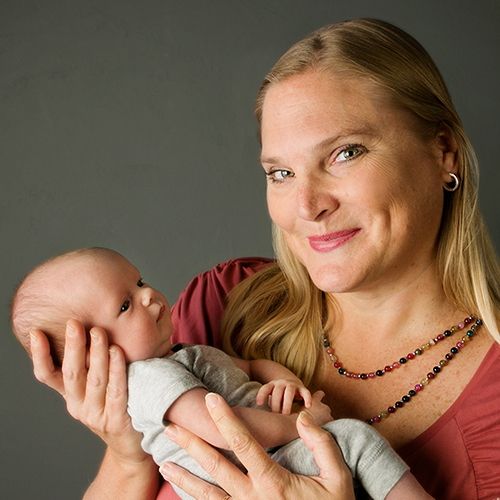

A love for babies fueled Kimberly's 20+ year career serving families in the postpartum time frame. With a passion for nurturing new parents, she trains doulas and educators with CAPPA to support and educate for a strong beginning of bonding and connection. She loves teaching expectant families to have a smooth transition to new baby life through the Providence Healthcare System in Portland, OR. She began as a postpartum doula, then quickly added breastfeeding and new parent classes to help parents from the very beginning, and then became an IBCLC to meet their bigger challenges. She owns ABC Doula & Newborn Care in Portland, OR, is the mother of 2 grown kids, and resides in Phoenix near her parents. Like many other baby whisperers, Kimberly has honed skills for listening and responding to babies that parents can quickly learn to understand and interpret their tiny humans. When she sees parents struggling, and especially with the most fussy of babies, her heart hopes that all parents could be given the tools to compassionately support their little ones, and learn how to meet their needs, which creates more confidence in themselves in their new roles as well.
Topic: Understanding Infant Crying - [View Abstract]
1. Categorize infant crying into low, normal, and excessive crying at 3 different points on the Crying Curve.
2. Define 3 areas of newborn body tension and their most likely causes, with the aim to meet infant needs
3. Explain 5 sounds and tones infants exhibit and list their causes and solution approaches
How much crying is too much crying? When parents reach out with questions about their babies crying, what parameters are available to help guide them to understand their infants? This session will aim to guide professionals who support the newborn family, including offering guidelines for number of hours that are considered normal, descriptions of high and low criers, timelines of expected crying, and solutions and alternatives when the typical approaches don’t seem to work. Utilizing the research on the Crying Curve--a pattern of crying beginning at about 42 weeks of gestation, peaking at 6-8 weeks of age, and sharply declining by 12-15 weeks--parents can navigate newborn life according to their gestational age. 15 different studies have concluded that this pattern is common across infants of all cultures, gestational ages (based on a 40-week gestation), and parenting styles—and the applications are many in the early parenting world. Help families learn to utilize this model to help assess their newborn. Multiple models of interpreting newborn crying from body language to sound and tone to help interpret newborn needs will be shared. Let’s move beyond reassuring parents that “colic” will end by 3 months and offer them solutions and alternatives.
Accreditation
Midwifery CEUs - MEAC Contact Hours
This program is accredited through the Midwifery Education & Accreditation Council (MEAC) for 6 Hours, the equivalent of 0.6 CEUs. Please note that 0.1 MEAC Midwifery CEU is equivalent to 1.0 NARM CEUs.
MEAC credits are valid until 02/06/2025.
ACNM CEUs
This program is approved for 6 hours of education by the American College of Nurse Midwives. This credit is applicable to Nurse-Midwives, Certified Midwives, Registered Nurses and may be accepted by other certifying bodies.
ACNM credits are valid until 02/06/2025.
ACM CPD Recognised Hours
This is an Australian College of Midwives CPD Endorsed Activity. This program is approved for 6 ACM CPD Endorsed Hours.
ACM credits are valid until 11/29/2024.
CERPs - Continuing Education Recognition Points
Applicable to IBCLC Lactation Consultants, Certified Lactation Consultants (CLCs), CBEs, CLE, Doulas & Birth Educators. GOLD Conferences has been designated as a Long Term Provider of CERPs by IBLCE--Approval #CLT114-07. This program is approved for 6 CERPs (4 L-CERPs & 2 R-CERPs).
CERPs are valid until 26/06/2026.
Tags / Categories
(IBCLC) Clinical Skills, (IBCLC) Development and Nutrition, (IBCLC) Education and Communication, (IBCLC) Infant, (IBCLC) Infant, (IBCLC) Pathology, (IBCLC) Psychology, Sociology, and Anthropology, (IBCLC) Public Health and Advocacy, Bonding and Attachment, Breastfeeding Support, Collaboration of Care Providers, Infant Sleep, Jaundice, Mediation, Conflict Resolution, Legal Issues, Newborn Assessment
How much time do I have to view the presentations?
- The viewing time will be specified for each product. When you purchase multiple items in your cart, the viewing time becomes CUMULATIVE. Ex. Lecture 1= 2 weeks and Lecture Pack 2 = 4 Weeks, you will have a total of 6 weeks viewing time for ALL the presentations made in that purchase.
- Time for viewing the talks begins once you purchase the product. For Live Webinars & Symposiums, the viewing period begins from when the live event takes place. Presentations can be accessed 24/7 and can be viewed as many times as you like during the viewing period.
What are bundled lectures?
- Presentations may be available individually or via a bundled package. Bundled lectures are a set of lectures that have been put together based on a specific category or topic. Some lectures will be available in both individual and lecture form, whereas others will be available only via a bundled lecture pack.
Will there be Handouts?
- YES! Each lecture comes with a PDF handout provided by the Speaker.
Some lectures include a Q&A, what does that mean?
- During our online conferences, presentations that occur live are also followed by a short 15 minute Question & Answer Session. The Speaker addresses questions that were posted by Delegates during the presentation. We include the recording of these Q&A Sessions as a bonus for you.
How can I receive a Certificate?
- If this presentation offers a certificate, once you are done viewing the lecture or the lectures within a bundle, submit your attendance record in order to be able to download your certificate. You'll be able to see which credits are offered for the lecture by hovering over the "Credits Available" link within the "Speakers & Topics" tab.
Professionals that selected this package also viewed

|
|

|










